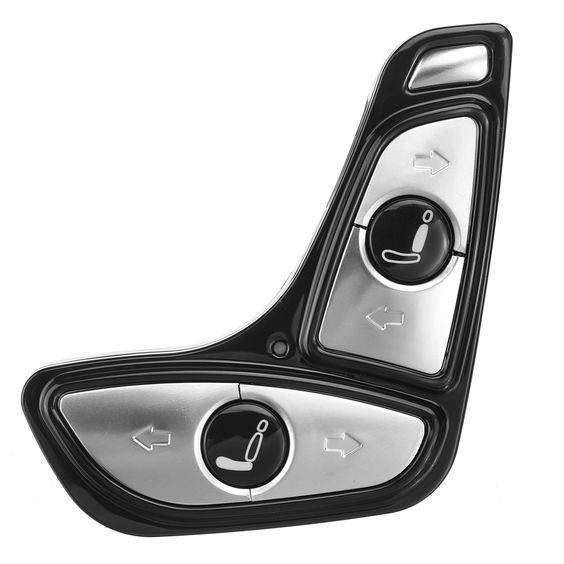Repair instructions
Power Seat Switch Replacement Tips
Overview
Replacing a faulty power seat switch requires a trim removal tool, a pry tool, and a screwdriver. The power seat switch is crucial for adjusting the seat’s position, which not only enhances comfort but also plays a vital role in safety during a collision. If you notice symptoms such as the seat not moving, moving sluggishly, or stopping short, it’s time for a replacement.

Power Seat Switch Replacement Steps
1. Safely Remove the Power Seat Switch
Most power seat switches are protected by a plastic cover. To access the switch, carefully remove this cover using a trim removal tool with a forked end. Hook the fork under the edge of the cover and pull it off.
If you don’t have a trim tool, you can use a screwdriver, but this method risks damaging the switch.
2. Safely Remove the Seat Trim Panel
Locate the trim panels on either side of the seat base, which conceal the internal components. These panels often hold the screws for the power seat switch.
- With Screws: Unscrew any fasteners before prying the panel off.
- With Clips: If the panel is held by clips, use a pry tool to unfasten them. Slide the tool between the panel and the seat frame to release the clips. Be cautious, as prying by hand may damage the clips.
3. Safely Remove the Switch Mounting Screws
Once the trim panel is off, turn it over to access the switch mounting screws. Use a compatible screwdriver to remove these screws.
4. Disconnect the Power Seat Switch
With the screws removed, unplug the wiring harness connected to the power seat switch. Lift the switch upwards to detach it from the harness.
5. Install the New Power Seat Switch
After removing the old switch, position the new switch in place and reconnect the wiring harness. Reverse the removal steps to reattach the trim panel and cover.
6. Test the New Switch
Once everything is reassembled, test the new power seat switch. If it doesn’t function correctly, double-check your connections and installation steps.
Understanding the Power Seat Switch
The power seat switch, also known as the seat control switch, allows for various seat adjustments. It typically controls multiple electric motors responsible for moving the seat forward, backward, and tilting the backrest.
Common Symptoms of a Faulty Power Seat Switch
A malfunctioning power seat switch can exhibit several symptoms:
- Seat does not move when activated
- Slow movement when adjusting the seat
- Movement in only one direction
- Seat stops short of the desired position
Before replacing the switch, inspect the fuse box, relays, and power seat motor, as issues in these components can also affect functionality. Additionally, check for any obstructions on the seat rails that could impede movement.
Conclusion
While the power seat switch might seem minor, its role in ensuring proper seat adjustment is essential for both comfort and safety. Addressing a faulty switch promptly can help maintain an optimal driving experience. If you need replacement parts, visit CarParts.com for a reliable selection.
